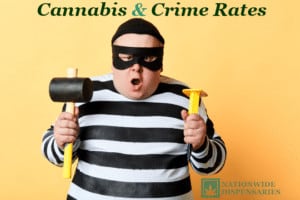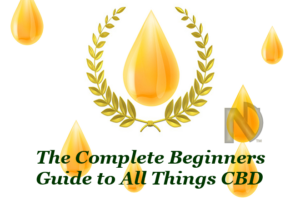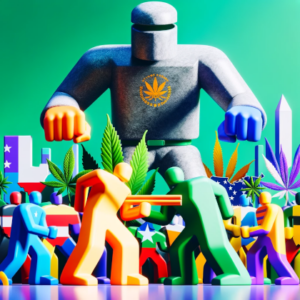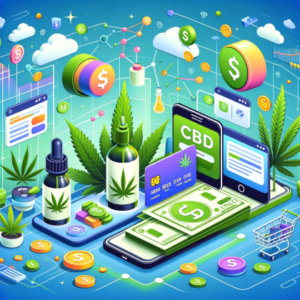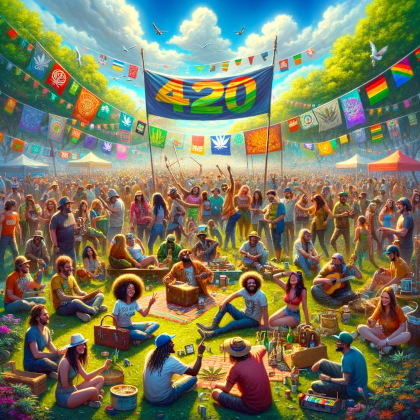
The Rise of 420: How a Teenage Code Became a Worldwide Celebration
April 20th rolls around, and suddenly, the air is electric with anticipation and good vibes and tinged with the skunky, earthy sweetness of pot smoke. Why? Because it’s 420, baby! This is the day when rebels, misfits, and free spirits alike come together to celebrate the green stuff— and it’s been going down since the 1970s.
Born from the clandestine gatherings of high schoolers and whispered in the halls of counterculture, the myths and legends have become a bona fide holiday, a symbol of freedom and camaraderie. You may be familiar with the holiday in some capacity, although below, we’re breaking down the foggy haze of history and looking at how 420 has shaped cannabis culture all over the world.
The Origins of 420
A while back, there was a lot of confusion about where the term 420 even came from, so let’s address the elephant in the room: Hitler’s birthday? Really? Nope. 420 had nothing to do with Adolf, and it wasn’t a police code for pot smoke or drug dealing. It’s not some nefarious plot or secret society agenda; it’s simply a time-honored tradition started in the 1970s by a couple of teenagers. So next time someone hits you with any of those tired old myths, give ’em a knowing smile and pass the joint.
The truth is, 420 was a code.
Back in 1971, in sunny San Rafael, California, five high school students, known as the Waldos, congregated for a daily ritual. While the truth is still a little murky to this day, legend has it that a secret crop of weed was growing in the woods behind their school, and they were on a mission to find it. They could have just as easily been getting together to smoke the green stuff as teenagers did in the 70s. However, stories of maps and mysteries have also spread along the same lines as the original stories from the original members.
The boys would rendezvous at the Louis Pasteur statue on school grounds at 4:20 PM. Rumor has it they chose it because it was conveniently located nearby after their extracurricular activities and practices and at a convenient time before their parents got home.
420 became the code to smoke weed and a shorthand way for members to mention their plans inconspicuously to one another. According to one of the members, Steve Capper, “We used to remind each other in the hallways that we were supposed to meet up at 4:20 PM. It originally started ‘4:20-Louis,’ and we eventually dropped the Louis.”
How 420 Grew and Spread
This little tradition stayed with the teens into adulthood, but it didn’t catch on for the rest of the world until a little later through the power of one of the biggest jam bands of all time— the Grateful Dead.
According to the story, one of the Waldo’s older brothers became close friends with the bassist, Phil Lesh. Lesh allowed them to use the rehearsal space the band practiced in to spark up. Later, another friend of the Waldos, a roadie named Dave Reddix, started using the 420 code around the band, which ultimately helped it to be adopted by the Deadheads, allowing it to grow and spread far beyond the Grateful Dead community.
By 1990, a couple of Deadheads in Oakland passed out a ton of flyers inviting people to smoke on April 20th at 4:20 PM. The flyer, too, had some of the wrong details about the Waldos and the police codes. The influx of people who showed up was incredible. The flyers were meant to be somewhat of a joke, however they still attracted a ton of like-minded people, and that day, the event became known as “420 day”—the first 420 celebrations.
“420” started as a simple code with a secret meaning among the initiated. It signified a time to gather, partake, and celebrate the green stuff. And as these things tend to go, the code spread like wildfire, carried by counterculture and rebellion. Before long, 420 wasn’t just a time; it was a movement and a significant symbol of defiance in the face of prohibition.
It’s become a cultural phenomenon. From the smoke-filled concert halls of yesteryear to the bustling dispensaries that allow you to order top-shelf weed from an iPad today, 420 will always be at the center of everything.
These days, the most common use case for 420 is the term “420-friendly,” which implies that a person or business is part of the movement. For example, the states where marijuana is now legal for adult recreational use are considered to be “420-friendly” (at least to some extent). Airbnb’s, hotels, and some social clubs advertise being 420-friendly, as will people on dating apps, making it clear they’re looking for someone who partakes in the green stuff.
420 Celebrations Then, Now, and In The Future
Sure, the original 420-day celebration was just a concert where people smoked together. But as it caught on, it grew. This counterculture movement had hazy beginnings in clandestine basements across the country, but it later became a way to communicate, find like-minded individuals, and advocate for change. 420 was and still is a symbol of solidarity among the counterculture.
420 celebrations started in California, thanks to the Grateful Dead and the Waldos. It was always around— think Woodstock and the hippie movement. But the 90s were an exciting decade. Perceptions were changing, and people were more connected than ever before with more access to phones and the internet. It was easier to get organized and push for change. 420 was a rallying cry, a call to arms in the fight for freedom. You could find it at concerts— sure. But you could also find it at underground headshops, among cultivators, and with users alike. And when people started finding each other, they started getting organized.
In the 90s, some counterculture movements started gaining traction around 420. Grunge took over rock, and rap music brought weed to the forefront, exploding into the mainstream with Dr Dre along with Snoop dropping “The Chronic”. Along with that, the Seattle Hempfest, held its first free event in 1991. Known as the “Original Free Speech Protestival,” the free-speech-protected festival has been advocating for change since 420 first started catching on ever since.
A few years later, the High Times Cannabis Cup debuted in the United States in 2010. The event originally launched in Amsterdam in 1988 to push for legalization and made its way to the states for the same reason— to bring legitimacy to an underground industry and fight the good fight. It’s still held annually to this day in legal states, attracting tens of thousands of people to the event to experience the emerging cannabis industry, fight for change and legitimacy, and meet likeminded people during the expo and concert series, featuring some of the biggest 420-friendly musicians of all time.
But more than events, between the 70s and the 2010s, scientists and researchers also played a crucial role, publishing groundbreaking studies on the medicinal properties of cannabis. The discovery of the endocannabinoid system and the way cannabinoids interact with our bodies helped to push for a social shift, and changing the negative commentary around cannabis by acknowledging the facts.
Today, 420 celebrations have undergone a radical transformation. With festivals and events popping up across the country and around the world, and a largely shifted public opinion on cannabis, these events are more culturally significant than anything. Most states have a dedicated cannabis festival set up on or around April 20th every year, bringing together brands, businesses, lovers, and more in massive crowds to celebrate the plant. One of the largest ones is the National Cannabis Festival, which is held in Washington DC every year and brings out legendary musicians, food, industry leaders, and, of course, people to celebrate cannabis and push for federal legalization.
Today’s 420 celebrations are a far cry from the clandestine meetings of the past, but the spirit of rebellion still burns bright. So whether you’re lighting up at a festival or sparking up with friends, remember: 420 isn’t just a date; it’s a movement. It’s a celebration of freedom, of unity, and of progress. As time marches on, these events will only get more popular and more widespread as 420 continues to become a bona fide holiday that thousands of people have been fighting for over the last fifty years.
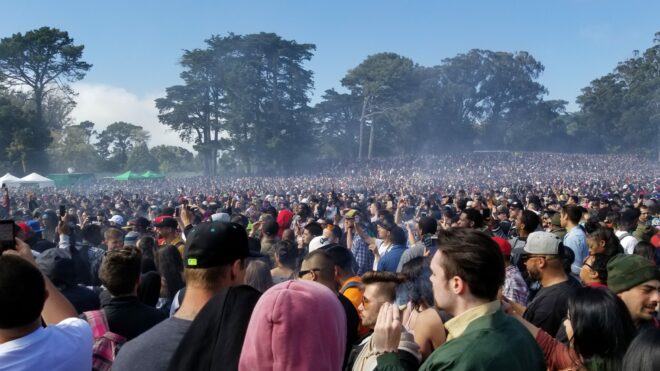
Top Reasons to Celebrate 420
420 is more than just an excuse for marijuana dispensaries to run big sales. Today it has deep philosophical and moral significance. Whether you consider it a joke holiday or not, 420 offers ample reason to celebrate. Over the past half a century, the God-given right to smoke weed for pure happiness or to get a medical marijuana card to better one’s quality of life has been slowly coming out of the shadows — and basements and attics and closets — of America and becoming accepted by the mainstream.
Not too long ago, the mere mention of cannabis sent shivers down spines and drew frowns from onlookers. It was the forbidden fruit, the taboo topic, demonized on the nightly news for decades. The War On Drugs has been a long, brutal war with millions of casualties and a cost of billions of dollars. Some battles are still being fought, and there may still be some skirmishes even after the end of federal prohibition. Today, a sizable majority of Americans are against the federal ban on marijuana and in favor of putting regulation in the hands of the states where it belongs.
The harsh propaganda brought on by the war on drugs painted a picture of cannabis as a gateway drug and something only losers enjoyed— but through years and years of little steps toward ending prohibition, perceptions are shifting. Reparations are also being made for the miscarriage of justice that has been perpetrated on the American public in the name of the War On Drugs. Marijuana possession-related convictions are being expunged from public records, charges are being dropped, and in some states, the smell of marijuana alone is no longer a good enough reason for the cops to kick down your door and raid your apartment.
Many states have been creating additional opportunities and making it easier for entrepreneurs in communities hit hardest by the War On Drugs to pursue prosperity by growing and selling the simple weed that has cost them so much over the past century. So, all that said, we’ve come a long, long way— and that alone is worth celebrating.
More than Just legality; it's about legitimacy
What was once whispered in secret and only spoken about in code is now legal in 75% of U.S. states, and the momentum isn’t slowing down, either. Alabama is setting up a medical program, Florida may legalize cannabis in November, and Texas of all places, with a limited MMJ program, just came out with 30mg THC-infused gummies from one of their state licensed dispensaries. More people than ever know the difference between an indica and a sativa, acknowledge the different highs associated with different cannabis products and understand the endocannabinoid system, cannabinoids, and terpenes.
Half of all Americans have smoked weed, and almost 80% of people live in a county with at least one dispensary. The cannabis industry created over 440,000 full-time jobs and is expected to hit a net worth of $40 billion in 2024, contributing $115.2 billion to the economy. These days, 70% of people believe in legalizing cannabis. In states where marijuana is legal for both medical and recreational use, coffers are gaining a significant boost from marijuana tax revenues. They are also saving a ton of money and human resources that were previously spent on law enforcement and incarceration.
But it’s not just happening in the U.S.; the green wave is sweeping across the globe, with countries like Canada leading the charge. It’s a sign of changing times and shifting attitudes, all because we’re finally opening ourselves up to the possibility that something we once thought to be evil could actually be good for us. Sure, there are pros and cons to recreational cannabis, and the black market is still worth several large fortunes, but that’s actually great news for the cannabis industry. About one-third of marijuana sales in the U.S. now flow through legal channels, which means that legal marijuana sales in the U.S. still have quite a lot of room to grow.
More than money and an excuse to party
Another huge reason to celebrate 420 is acknowledging how far we’ve come on the medical side. Cannabis changes lives. Sure, it makes you feel great, but it’s been a lifesaver for countless people facing debilitating ailments. From easing chronic pain to soothing troubled minds, we continue to unlock its therapeutic potential and strengthen our sense of community through clinical and scientific research, but also just enjoying it in our spare time.
Whether sharing a joint with friends or advocating for medical research, 420 is a time for us to come together and support one another. It’s a celebration of unity and our long time in the dark. Now that we’re emerging on the other side, 420 is a reminder of the power of compassion. It’s about righting the wrongs of the past and forging a brighter future for generations to come.
Celebrating 420 is like celebrating the 4th of July. Protest and progress are the American way. From the shadows of prohibition to the light of legalization, 420 is a testament to the resilience of the human spirit. And that, my friends, is something worth celebrating.
Final Thoughts: Happy 420


